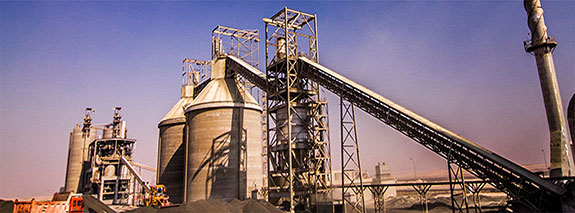Commissioning amid a revolution: part one
Introduction
Building Materials Industries Company (BMIC) is a typical cement plant that was built under an EPC contract, procuring equipment from the largest OEMs in Europe and built over a period of three years – the normal timeframe for such a plant. However, what makes BMIC special, is that it is not just a user of machinery, but rather a developer and problem solver. When put in the context of a cement plant construction project undertaken amid a popular mass uprising that swept a nation in 2011, the ingenuity of its management, and the scale of its achievements in overcoming obstacles, comes into full perspective.
The story begins in to 2007, when Egypt Kuwait Holding (EKH) acquired a license from the Egyptian government to construct a 1.5 million tpy cement plant in the Upper Egyptian governorate of Assiut, an impoverished region that would benefit from increased investment. By 2009, BMIC had begun its civil engineering works and drew up contracts with European OEMs to start receiving equipment by mid-2010. The plant features a 1300 tph Hazemag crusher, the output of which is transported on a Beumer system to the 420 tph Gebr. Pfeiffer vertical roller mill (MPS5000). The crushed mix is then preheated in BMIC’s 130 m high, 5-stage cyclone preheater column manufactured by KHD, before finally being fired up to 1600°C in one of the world’s shortest 5000 tpd kilns, also manufactured by KHD. All of the electrical systems were provided by Siemens, and BMIC boasts two 25 MW electric generators manufactured by Cummins.
Construction
For a period of five to six months, starting in mid-2010, construction work and installation was carried out by Egypt-based EPC contractor Aresco, under the supervision of various European OEM specialists. On 25 January 2011 – and without warning – the first of Egypt’s two revolutions erupted, marking the start of BMIC’s obstacle-filled path to commissioning. In a period characterised by extreme political volatility and a security vacuum, one cannot blame the European specialists for choosing to leave the country out of fear for their safety. This, however, presented BMIC with the challenge of pressing on with construction and installation, not only in a politically unstable and insecure environment, but also in the absence of specialist supervision. It was of paramount importance that the EPC contractor and in-house engineers were able to complete the job so that when the specialists returned, they could sign off on their equipment and extend the OEMs’ warranties and guarantees. The alternative would have been to wait until the political volatility settled – an event which remained incredibly uncertain – and delay commissioning by at least a year or two, a choice that would have been detrimental to investors. At that point the endeavour was becoming a gamble, and all involved were betting on BMIC.

By January 2012, construction was moving forward, and between the end of 2011 and the beginning of 2012, some of the specialists had started to return. The target was to start operations by the first quarter of 2013, and with every returning specialist having only minor comments, if any, BMIC considered this to be its first success.
By May 2012, commissioning began on the two KHD 135 tph cement mills. One of the first problems was that one of the mills provided suffered from excessive vibrations. Over the span of four months, BMIC worked in cooperation with KHD and determined that by changing the lubricant used in the mill’s gear, the vibrations significantly decreased. This solution was later advocated by lubricants manufacturer Fox and is now a standard fix for KHD.
Most of the specialists’ concerns centred around their absence during installation and wanting to inspect prior to signing off. BMIC, Aresco and KHD formed a committee in November 2012 to populate a list of comments that were scheduled to require eight months for completion. Among the comments received was a request to inspect the refractory insulation of the preheater tower, which was installed in the absence of KHD’s supervisors. This required cutting inspection openings on the inside of each of the cyclone’s five stages – effectively breaking the sealing refractory – and deploying sensory equipment, a process that was scheduled to take six months. As the biggest job on the list, cutting the inspection openings would have resulted in missing the targeted date for the start of operations. BMIC engineers devised an alternative method where cuts were made through the external metal sheets of the column, allowing KHD to inspect the refractory from the opposite side. This reduced the job time significantly from the scheduled six months to three, and allowed the company to work through all concerns in a period of six weeks, keeping on schedule for the 2013 start.
This is part one of a three-part article written by Samir Sabry for World Cement’s November issue and abridged for the website. Subscribers can read the full issue by signing in, and can also catch up on-the-go via our new app for Apple and Android. Non-subscribers can access a preview of the November 2015 issue here.
Read the article online at: https://www.worldcement.com/special-reports/27102015/sabry-bmic-cement-difficulties-cement-plant-1/
You might also like
UltraTech Cement Ltd and Gebr. Pfeiffer forge strong alliance
To build three new clinker production lines, UltraTech Cement will once again be using vertical roller mill technology from Gebr. Pfeiffer.


